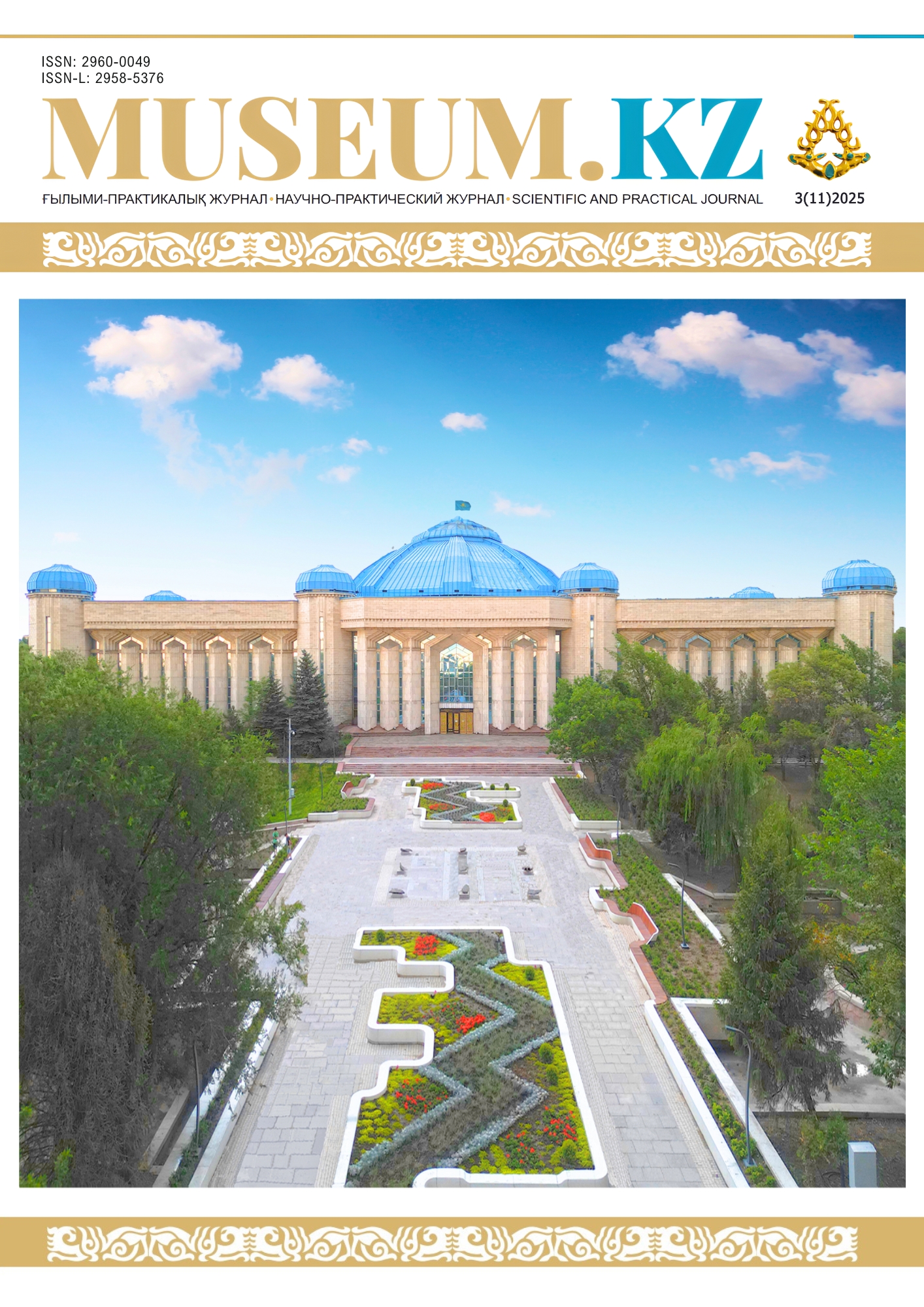A DISTINCT ELEMENT OF KAZAKH HORSE CULTURE: BRIDLES (Using Exhibits from the Aktobe Regional Museum of History and Local Lore)
DOI:
https://doi.org/10.59103/muzkz.2025.11.06Keywords:
bridle, horse harness, ethnography, nomadic culture, museum exhibits, Kazakh craftsmanship, historical heritage, traditional artAbstract
This scientific article explores the ethnographic, historical, and artistic features of bridles preserved in the collection of the Aktobe Regional Museum of History and Local Lore. The bridle is examined as a significant component of traditional Kazakh equestrian culture, revealing its practical and ceremonial functions. The study provides detailed descriptions of the materials used, manufacturing techniques, artistic decorations, and functional characteristics. By analyzing museum exhibits from different historical periods, the research highlights the evolution of nomadic culture and the cultural significance of horse tack in Kazakh society. Special attention is given to the structure of the bridles, their decorative elements, and regional variations. The craftsmanship and aesthetic approach of traditional artisans are also considered, reflecting their role in preserving and enriching national heritage. The purpose of this article is to reveal the historical significance of the bridle, preserved in the collection of the Aktobe Regional Museum of History and Local Lore, as an important part of the history, life and worldview of the Kazakh people. This research represents a valuable contribution to the preservation and promotion of Kazakhstan’s cultural legacy, while also integrating important museum artifacts into scholarly discourse and making them accessible to future generations.







